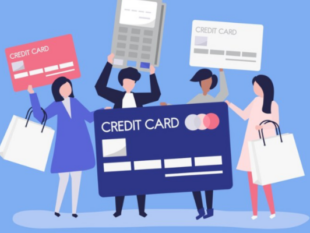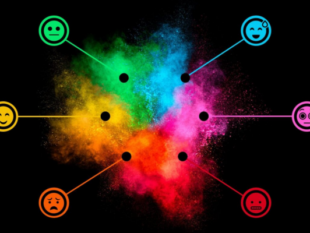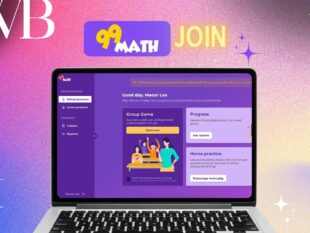Why One-on-One Support Can Make a Big Difference in Learning
by Soumava Goswami Our Blogs 13 March 2025

Learning preferences vary from one person to another. At a young age, a lot of people are unaware of their learning preferences. That’s why you need one on one teaching for young age students. a teacher is in the best position to understand the learning needs and preferences of each student.
in the first place, you will notice some students absorbing facts faster than others. However, you don’t have the time or tenacity to micro-observe students in a traditional classroom setting. Usually, teachers rush through lessons, in the traditional classrooms. meanwhile, some students catch up, while others fall behind.
The teachers scarcely have time to personally notice the students who are reeling behind. the bottom line is that it is one of the biggest challenges of the traditional classroom setting that you can’t ignore. As a result, a lot of young learners don’t get the desired support at a tender age.
How one on one teaching differs?
for students who need personalized guidance, it is bliss. One on one teaching makes it easy for slow learners to grasp concepts. They can also ask questions freely. Moreover, they get the chance to learn at their own pace.
let’s take an example to understand. In subjects like business or finance there re a lot of real-life implications involved. Until students understand the concepts well, they cannot excel in the practical field.
Some of the areas where they might suffer are real-time calculations, applying formulas, and solving real-life puzzles. Most importantly, they will always seek direct help from seniors and colleagues to solve problems. However, they may not get access to their tutor or mentors at every stage.
Personalised Help for Complex Subjects
Students who are weak learners often suffer from memory lapses too. Their memorization spans are shorter than others. So, what can they do to boost their learning?
The first thing they need is one on one teaching. A close-by mentor can help them improve their critical thinking so that they don’t memorize passively and brainstorm too. Meanwhile, teachers can make them learn from real-life examples too.
Let’s take the example of business and finance. These fields need a lot of real-life analyses. For example, you can analyze real-world trends and make projections in finance. Students can implement concepts and formulas to make projections under the supervision of teachers in a one-on-one setting.
when a concept seems overwhelming to them, teachers may take a pause or change the course of learning. However, you need a close-knit environment to implement this mix-and-match strategy.
Many learners turn to business and finance tutors. These specific subject teachers can provide genuine one on one one teaching. Most importantly, the step-by-step guidance they get from their subject mentors can help.
How do the one on one teachers help?
teachers can create a simplified learning model for them. They can also demonstrate complex problem-solving in some easy-to-understand steps as well. at the same time, teachers can create easier learning materials to help them learn at ease.
if you don’t have good one on one teaching in your area, turn to an online option. Good online teachers will also provide you with an end to end learning experience. Starting from doubt clearing to mock tests, they have all the skills rolled up their sleeves to help you learn better.
Improving Confidence and Motivation
When students feel like they aren’t keeping up, their confidence takes a hit, and they may start avoiding the subject altogether. This loss of motivation makes learning even harder, creating a cycle that can be difficult to break.
Having one-on-one support changes this dynamic. A tutor provides much encouragement, helping students see their progress and celebrate small wins. With personalised attention, learners feel more comfortable asking questions and working through their challenges without fear of embarrassment. As their understanding improves, so does their confidence.
Students Learn at Their Preferred Pace
There are a lot of one on one teaching principles that you cannot implement in a classroom setting. For example, the classroom prefers set schedules.
Most classroom-based teachers follow a mass teaching strategy. they might offer one odd doubt-clearing session and a few practical examples. However, one on one teaching ensures that each student understands a lesson to the core.
The one on one classes let students take their own time to learn better. when they fail to ideate a single topic, teachers won’t rush over to another.
On the other hand, teachers can set a higher pace and move on, if students understand the other topics quickly. Therefore, it is a very customized and individual-based learning program.
Providing Immediate Feedback and Correction
In a set classroom model, teachers can’t personally turn to each student. Often teachers don’t have the time to correct basic errors that a student makes in the classroom. At best, they can point out the issue and ask the student to solve it.
It may also get worse. Often students don’t realize their mistakes and learn wrong concepts. So, the issue is not limited to the individual’s pace of learning only. The individualized attention that every student deserves from their teacher is difficult to get in a classroom setting.
How does One on one teaching help?
Firstly, one on one classrooms allow teachers to address all big and small mistakes that a student makes. For example, let’s imagine you are going through a maths problem, or documenting a feature essay.
You have to get your facts and formulas correct in both cases. For the maths problem, you have to implement the correct formulas at each step. For the essay, you need a genuine fact collection and academic writing strategy.
However, you need close attention from the teacher while doing that. this is where the one on one teaching sessions come in. Teachers can leverage the scrutinizing attention towards students there.
Encouraging More Interaction and Questions
Many students hesitate to ask questions in a classroom setting. Some fear they might look uninformed in front of their peers, while others worry about slowing down the lesson. As a result, they remain silent even when they don’t fully understand a concept.
One-on-one learning creates a comfortable space where students can ask as many questions as they need without judgment. Tutors encourage discussions and adjust explanations based on the student’s level of understanding. When learners feel comfortable speaking up, they gain a deeper grasp of the subject and develop the confidence to participate more actively in other learning environments as well.
Adapting Teaching Methods
Not everyone learns the same way. Some people absorb information best through visual aids, while others prefer hands-on learning or verbal explanations. In a traditional classroom, teachers must teach in a way that works for the majority.
A tutor can personalize lessons based on a student’s learning style. They might use diagrams and charts for visual learners, real-world examples for those who prefer practical applications, or step-by-step breakdowns for those who need structured guidance. This flexibility makes learning easier and more enjoyable.
Bridging Gaps in Knowledge
Some students struggle in certain subjects because they have gaps in foundational knowledge. For example, a student who finds algebra difficult may have missed key concepts in basic arithmetic. Without fixing these gaps, learning more advanced topics becomes even harder.
One-on-one support allows tutors to identify these weak areas and overcome them directly. They can revisit past lessons, reinforce key concepts, and build a strong foundation before moving forward. This approach prevents students from falling further behind and helps them develop a more complete understanding of the subject.
Preparing Students for Real-World Applications
In many subjects, understanding theory is only part of the equation. Real-world application is also important. Yet, many classrooms focus only on textbook knowledge without connecting lessons to practical situations. hence, one on one teaching is necessary.
A tutor can bridge this gap by incorporating real-world examples, discussing industry trends, and explaining how concepts apply in professional settings. Whether it’s working through case studies, analyzing market behavior, or discussing decision-making, personalized learning helps students prepare for real-world challenges.
Whether it’s building confidence, closing knowledge gaps, or adapting lessons to fit a student’s learning style, this method offers benefits that traditional classrooms often can’t. Personalized education helps students truly understand and apply what they learn. With the right support, learning becomes less stressful, more engaging, and ultimately more effective.
Read Also:



































































































